Yakushima Island is a natural paradise located in the southernmost part of Japan and is one of the most diverse and stunning places that nature lovers can visit.
Home to a wide range of flora and fauna species, it is a popular destination for birdwatching enthusiasts. The island has a rich avian population, with a remarkable variety of birds that inhabit its lush forests, towering peaks, and pristine rivers, making it a perfect destination for bird lovers.
From the awe-inspiring sight of the Yaku Island Thrush to the beautiful white-rumped munias, Yakushima Island is a birding haven that offers unique opportunities to explore the remarkable diversity of birds that call this island their home.
In this article, we will take a closer look at the bird species found in Yakushima Island.
1. Japanese Cormorant
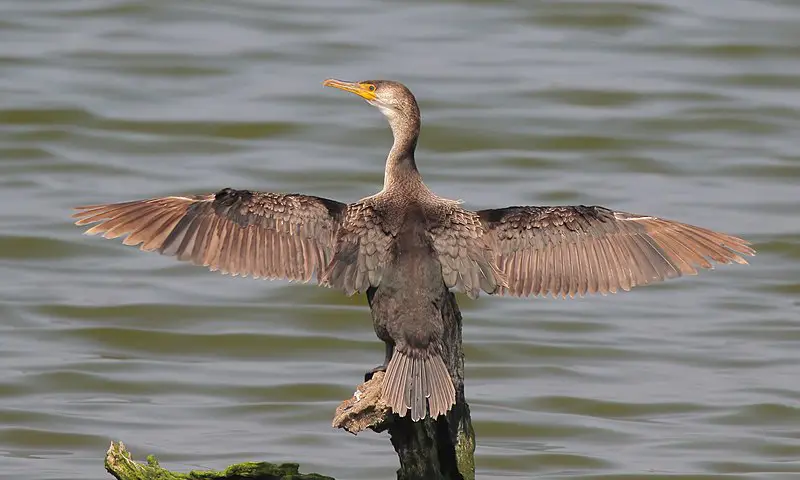
The Japanese cormorant is a black-bodied bird with a white throat and cheeks and a partially yellow bill. It can be found in the East Palearctic region, ranging from Taiwan to Russia’s Far East.
This species of cormorant has been domesticated by fishermen for centuries as part of their traditional fishing methods; fishers will tie strings around the birds’ necks so that.
They cannot swallow larger fish, allowing them to take only smaller catches back for themselves.
The domesticated birds are also trained to dive more deeply into waters than wild ones would typically do on their own – an invaluable skill when it comes to catching deep-sea prey.
As such, this long-standing tradition between humans and wildlife serves both parties well: humans get food while providing something essential back in return.Scientific classification:
| Kingdom | Animalia |
| Phylum | Chordata |
| Class | Aves |
| Order | Suliformes |
| Family | Phalacrocoracidae |
| Genus | Phalacrocorax |
| Species | P. capillatus |
Also Featured In: Most Common Birds in China, Birds You’ll Find in Hokkaido
2. Brown-Eared Bulbul
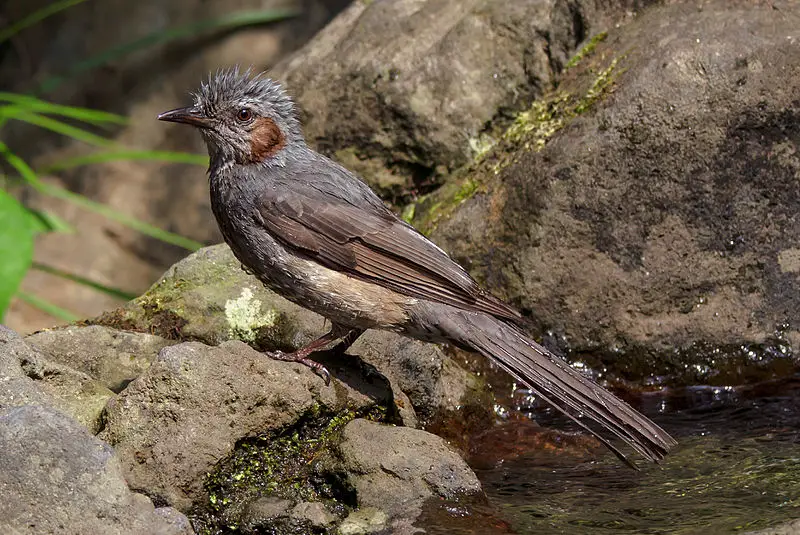
The Brown-eared Bulbul is a medium-sized bird native to eastern Asia. Its range stretches from southern Sakhalin to the northern Philippines, and it can be found in abundance throughout its habitat.
The species was initially classified as part of the Turdus genus before being reclassified into other genera over time – most recently Microscelis.
These birds are characterized by their unique brown ear tufts, which have earned them their common name.
They typically measure around 20 cm long with greyish olive colored feathers covering much of their body except for white underparts and wings marked with black bars on each feather.
Their diet consists mainly of insects but they also feed on fruits such as berries when available in addition to some small invertebrates like beetles or caterpillars.
With an impressive vocal range that includes both calls and songs, these birds make great additions to any garden or aviary.Scientific classification:
| Kingdom | Animalia |
| Phylum | Chordata |
| Class | Aves |
| Order | Passeriformes |
| Family | Pycnonotidae |
| Genus | Hypsipetes |
| Species | H. amaurotis |
Also Featured In: Common Birds in Japan, Common Birds of Sapporo
3. Ryukyu Robin
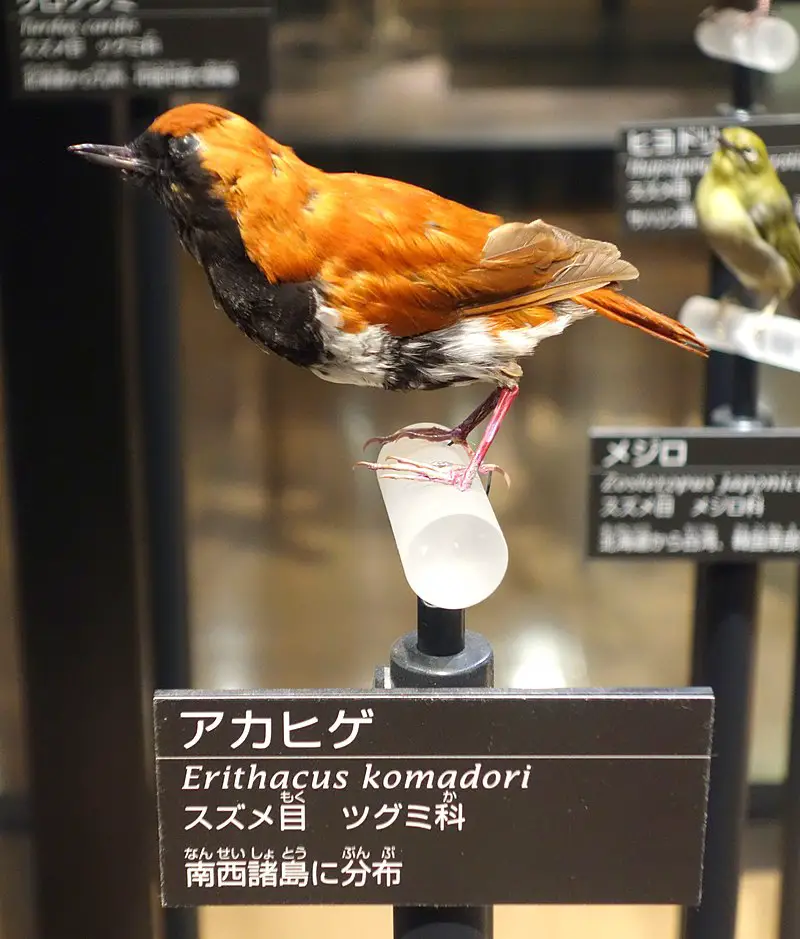
The Ryukyu robin is a small, vibrant bird endemic to the Ryūkyū Islands of Japan. It was formerly considered a subspecies of Okinawa robin (Larvivora namiyei).
The name Komadori originates from its relative – the Japanese Robin in Japanese language. Along with European and Japanese Robins, it was previously placed underthe same genus Larvivora.
These birds are very colourful and beautiful, featuring shades of blue-grey on their back while they have orange-red feathers below along with white patches on their cheeks which give them an adorable look.
They usually feed on insects like caterpillars or grasshoppers found nearby shrubs or bushes for sustenance apart from berries during winters.Scientific classification:
| Kingdom | Animalia |
| Phylum | Chordata |
| Class | Aves |
| Order | Passeriformes |
| Family | Muscicapidae |
| Genus | Larvivora |
| Species | L. komadori |
Also Featured In: Beautiful Birds Found in Amami Ōshima,
4. Warbling White-Eye
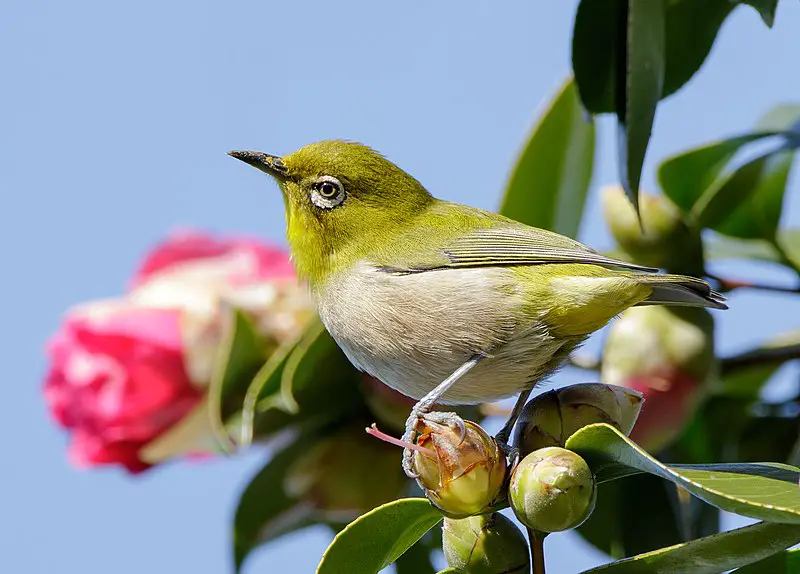
The Warbling White-Eye is a small passerine bird of the white-eye family, found in East Asia from Russia to Japan, Indonesia, Korea and the Philippines.
With its distinct yellow forehead and olive back it stands out amongst other birds. Its beady black eyes are surrounded by bright white rings which gives it an alert appearance.
It has a distinctive warble that can be heard during breeding season when they form large flocks in search for food or shelter.
During winter months these flocks disperse into smaller groups making them quite elusive at times but never far away.
This beautiful little bird is an important part of many local ecosystems so we should take time to appreciate their beauty while protecting them from potential threats like habitat destruction and climate change.Scientific classification:
| Kingdom | Animalia |
| Phylum | Chordata |
| Class | Aves |
| Order | Passeriformes |
| Family | Zosteropidae |
| Genus | Zosterops |
| Species | Z. japonicus |
Also Featured In: Most Common Taiwan Birds, White Oahu Birds
5. Izu Thrush
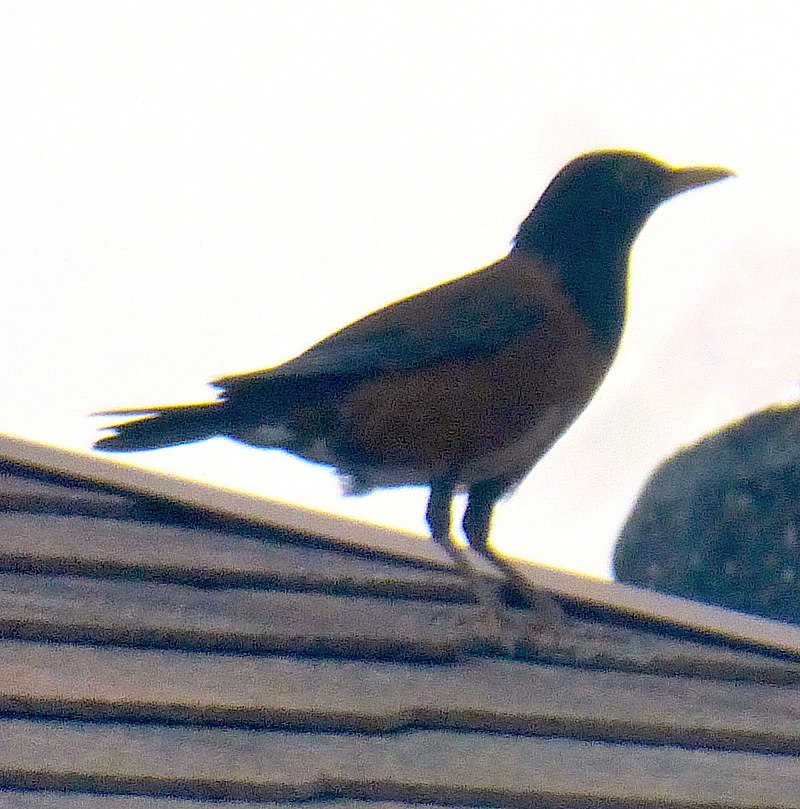
The Izu Thrush is a species of bird that belongs to the thrush family and can be found in Japan. It feeds mainly on small animals like earthworms, insects and fruits such as cherries or mulberries.
Breeding season for this species begins from March to July during which time males sing at dawn but later throughout the day. The female lays three-four eggs in a nest made out of twigs located close to the ground, usually amongst shrubs or low trees.
Besides its unique singing ability, other identifying features include brownish back with lighter head streaked with dark lines along with buffy underparts marked by gray spots and stripes around breast area.
Conservation efforts are being taken up protect them against habitat loss due to human activities resulting in their population decline over years making it an endangered species now .Scientific classification:
| Kingdom | Animalia |
| Phylum | Chordata |
| Class | Aves |
| Order | Passeriformes |
| Family | Turdidae |
| Genus | Turdus |
| Species | T. celaenops |
6. Japanese Wood Pigeon
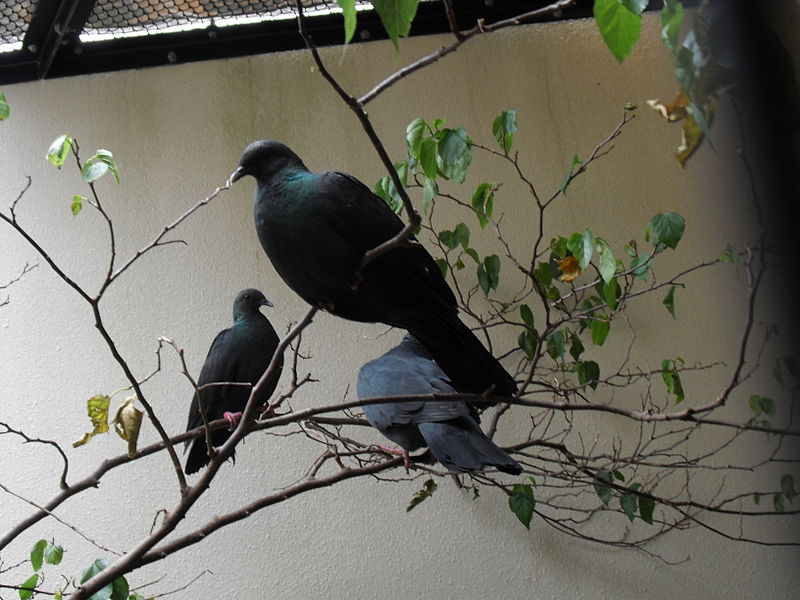
The Japanese wood pigeon is a species of columbid bird found in East Asia. It has an impressive size of 550 grams, and 43 cm long, making it the largest representative of its genus – Columba.
Its natural habitats are temperate forests and subtropical or tropical moist lowland forests near shorelines of the Pacific’s Korea Strait, Philippine Sea and East China Sea.
This beautiful creature has white wings with black tips that gives them a unique look when they take flight.
The male also have purple head feathers while their breast feathers are pinkish-red color which makes them even more attractive to watch out for.
In addition to this stunning beauty, these birds can make loud calls as well as whistles during mating season that you can hear from far away.Scientific classification:
| Kingdom | Animalia |
| Phylum | Chordata |
| Class | Aves |
| Order | Columbiformes |
| Family | Columbidae |
| Genus | Columba |
| Species | C. janthina |
Also Featured In: Coastal Birds That Live around Miyako-jima,
7. Taiwan Green Pigeon
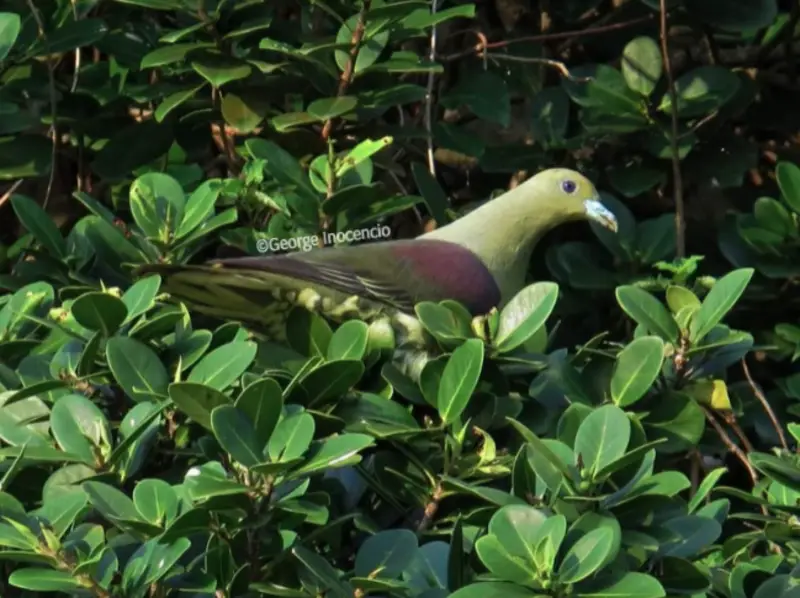
The Taiwan green pigeon is a member of the Columbidae family and was first described by Robert Swinhoe in 1863. It lives in Taiwan and Batanes islands, preferring subtropical or tropical lowland forests and gardens as its habitat.
Unfortunately this species faces threats from human activities such as deforestation which has destroyed much of its natural environment.
The Ryukyu green pigeon (T permagnus) found on Ryuku Islands used to be considered part of the same species but now it’s not so anymore due to differences between them.
This bird usually feeds on fruits, nuts and seeds while nesting among trees where they lay their eggs during breeding season.
They are generally small sized birds with greyish-brown feathers on body parts like wings, head etc., along with metallic colors around neck area giving them an attractive look overall.Scientific classification:
| Kingdom | Animalia |
| Phylum | Chordata |
| Class | Aves |
| Order | Columbiformes |
| Family | Columbidae |
| Genus | Treron |
| Species | T. formosae |
8. Japanese Bush Warbler
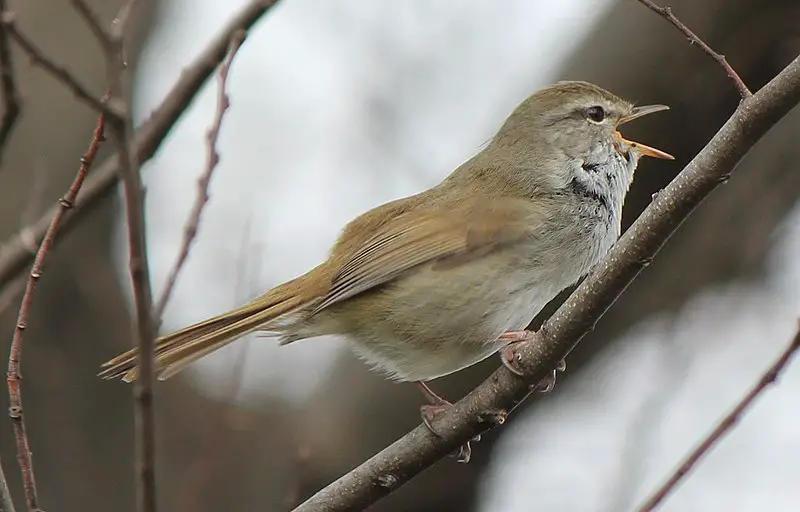
The Japanese bush warbler is a small passerine bird that can often be heard, but rarely seen. It has an olive brown colour with dusky shades below and its distinct pale eyebrows give it an almost smiling look due to the curved shape of its beak.
During springtime, these birds are known for their sweet singing which can be heard throughout Japan.
They typically inhabit areas such as deciduous forests, parks or gardens near human habitations in order to find food and suitable nesting places in trees or shrubs.
The diet consists mainly of insects like grasshoppers, cicadas and beetles as well as some fruits during autumn season when they prepare for migration southwards to warmer climates before winter arrives.Scientific classification:
| Kingdom | Animalia |
| Phylum | Chordata |
| Class | Aves |
| Order | Passeriformes |
| Family | Cettiidae |
| Genus | Horornis |
| Species | H. diphone |
Also Featured In: Common Birds in the Cities, White Birds Commonly Found in Hawaii
9. Brown Booby
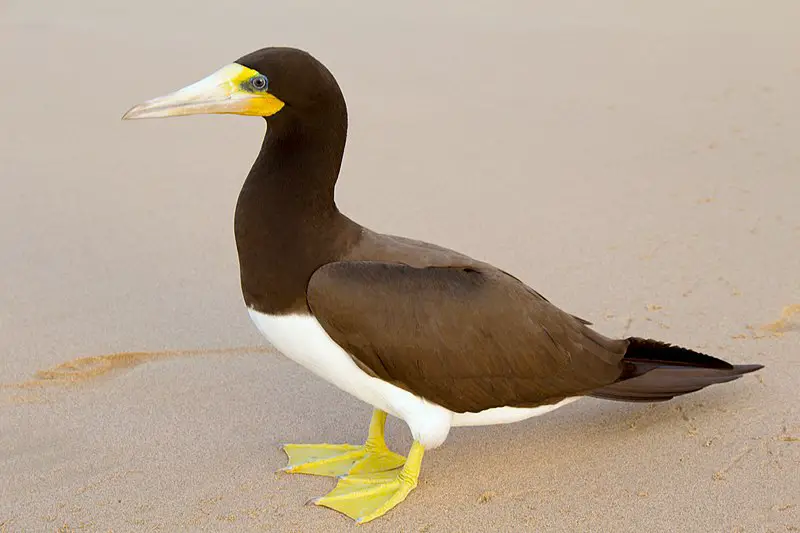
The Brown Booby is a large, seabird from the booby family Sulidae. It has a pantropical range and can be found in many areas of the world.
This bird lives in flocks and forages by plunging into shallow waters to catch small fish that are driven near the surface by predators or storms.
The brown booby is known for its short wings which make it highly maneuverable when hunting; this allows it to pursue prey quickly with sudden turns and dives.
Its diet also includes squid, crustaceans, eggs of other birds, as well as scraps from boats or ships they may come across while flying around coastlines.
They sometimes rest on floating objects during their long flights over open water between islands or continents.Scientific classification:
| Kingdom | Animalia |
| Phylum | Chordata |
| Class | Aves |
| Order | Suliformes |
| Family | Sulidae |
| Genus | Sula |
| Species | S. leucogaster |
Also Featured In: Egyptian Birds, Birds You’ll Find in the Sea
10. Daurian Redstart
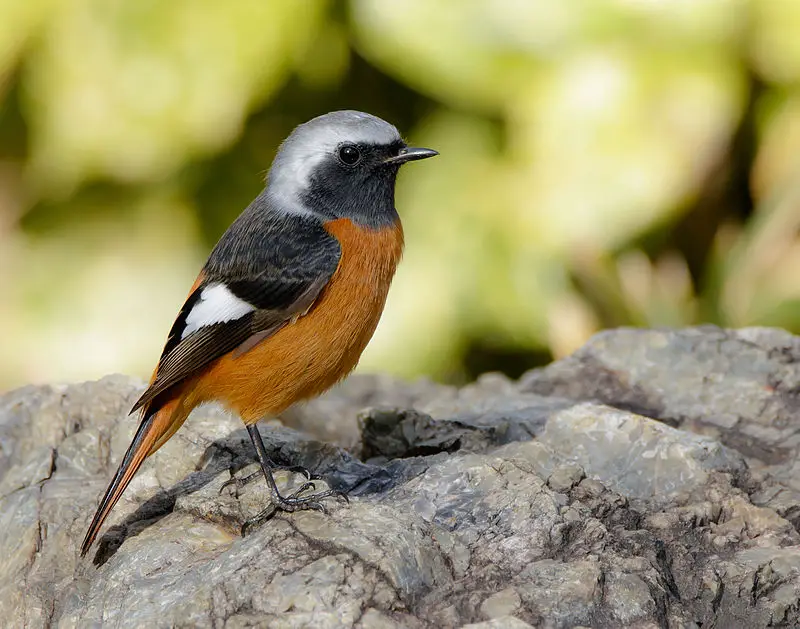
The Daurian redstart is a small passerine bird that inhabits temperate Asia. It was first described by Peter Simon Pallas in 1776 and has an average length of 14-15 cm with weights ranging from 11-20 g.
As typical for the species, males and females are strongly sexually dimorphic; male breeding birds have grey crowns, napes, lighter foreheads and crown sides.
The back feathers are brownish black while their underparts display bright orange colouring on chest and belly area, as well as white outer tail feathers, tipped in black or reddish brown.
Female Breeding individuals feature more muted colors – light gray heads to dull yellow chests alongside dark barred wings and tails also having contrasting white tips at the end of them.
This beautiful creature can often be seen perched atop tree branches near open areas such as riversides or meadows where it searches for food like insects which make up most of its diet along with some berries occasionally being eaten tooScientific classification:
| Kingdom | Animalia |
| Phylum | Chordata |
| Class | Aves |
| Order | Passeriformes |
| Family | Muscicapidae |
| Genus | Phoenicurus |
| Species | P. auroreus |
Also Featured In: Native South Korean Birds, Hong Kong Birds You Need to See
11. Eurasian Wren
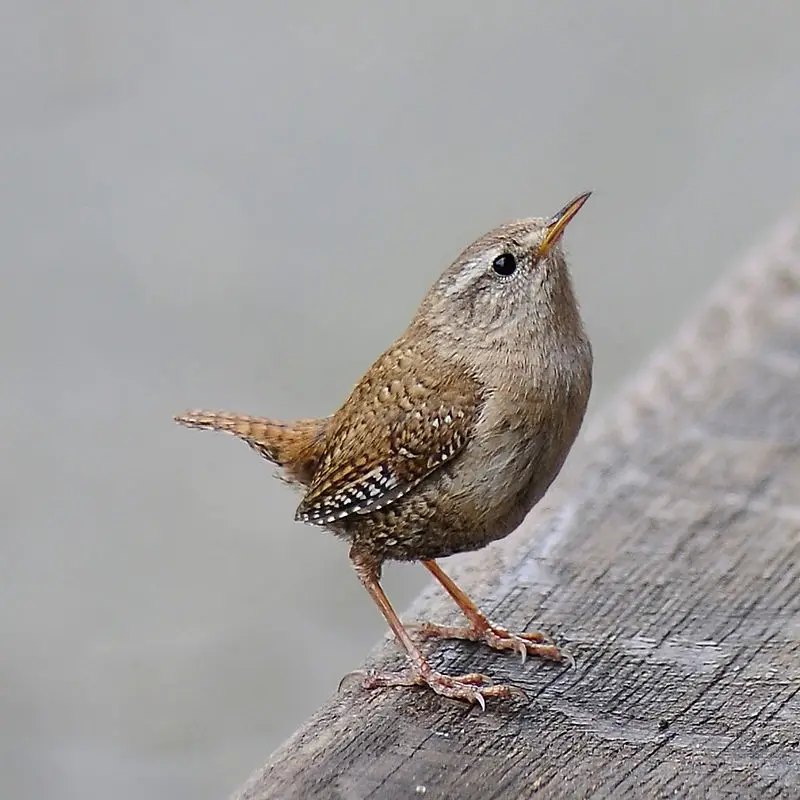
The Eurasian Wren is a small, insectivorous bird that can be found throughout Europe and Africa.
It has russet-brown upperparts with paler buff-brown underparts and its most notable feature is its short tail which it holds upright in flight or when perched.
Its neck is also quite short while the bill tends to be long and thin.
The species prefers dense vegetation like hedgerows, woodland edges and parks as well as coastal areas where there are plenty of insects for them to feed on such as spiders, beetles, caterpillars etc..
Their song consists mainly of high notes that vary between regions but usually ends with four or five repeated trills – making them an easily identifiable addition to any garden.Scientific classification:
| Kingdom | Animalia |
| Phylum | Chordata |
| Class | Aves |
| Order | Passeriformes |
| Family | Troglodytidae |
| Genus | Troglodytes |
| Species | T. troglodytes |
Also Featured In: Birds of Poland, European Birds
12. Striated Heron
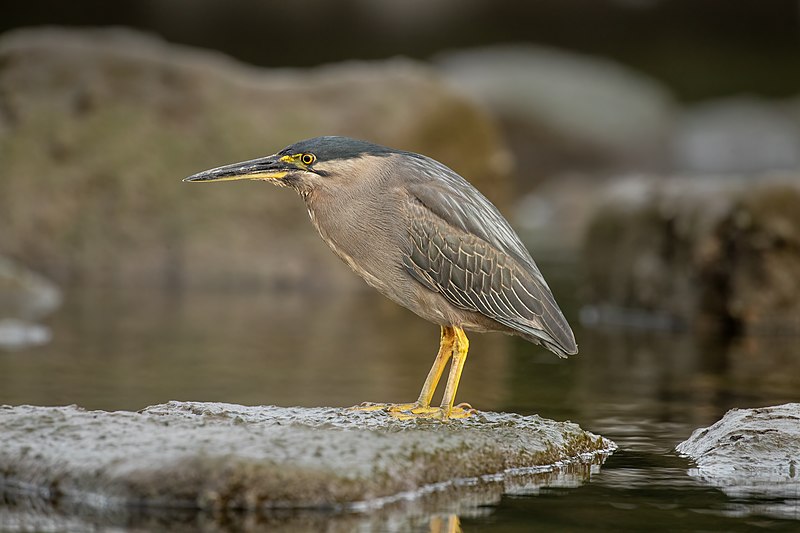
Striated herons are a small species of heron, measuring around 44cm tall. They can be found in wetland areas across the Old World tropics, from west Africa to Japan and Australia as well as South America and the Caribbean.
Striated herons have some interesting behavioral traits that make them unique; they’re mostly sedentary birds who tend to stay close to their breeding habitats throughout most of the year.
During breeding season these little green-backed herons become more active, often performing courtship dances in order to attract mates before nesting together on nearby trees or shrubs.Scientific classification:
| Kingdom | Animalia |
| Phylum | Chordata |
| Class | Aves |
| Order | Pelecaniformes |
| Family | Ardeidae |
| Genus | Butorides |
| Species | B. striata |
Also Featured In: Beautiful Malaysian birds, Rainforest Birds You Should Know
13. Brown Dipper
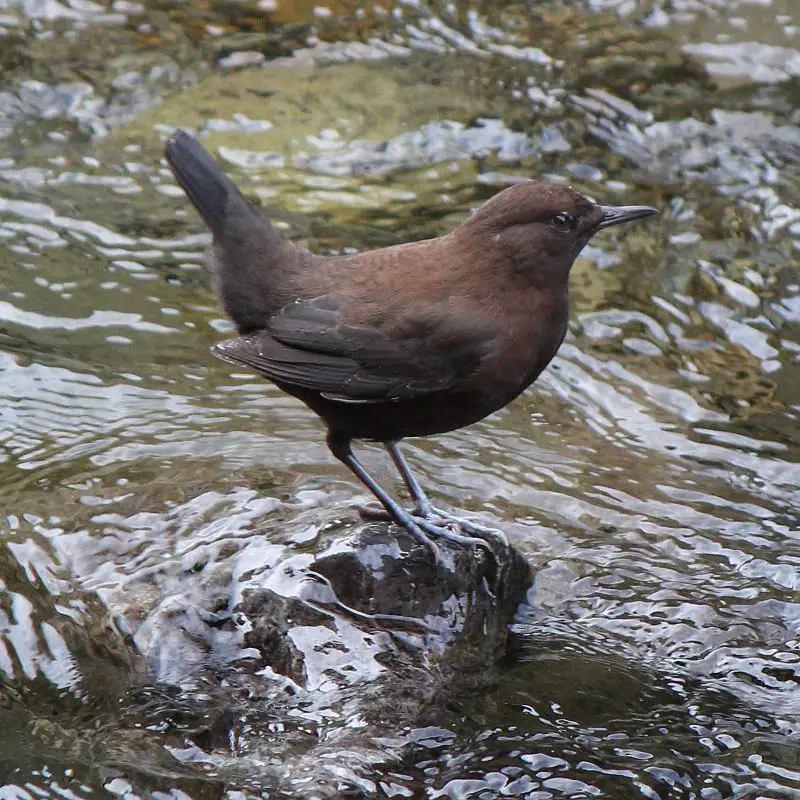
The Brown dipper bird is a songbird commonly found in the mountains of the east Palearctic. With its chocolate-brown plumage, it resembles a thrush and has a slightly lighter coloured back and breast.
This species is also known as Pallas’s dipper, Asian dipper, or Asiatic dipper. It has a cocked tail and is considered the largest of the dippers, measuring around 22 cm and weighing 87 g. Despite its size, this bird is an adept swimmer and is well equipped for aquatic life.
The Brown dipper’s natural habitat includes mountain streams and fast-flowing rivers. It is an aviary marvel to behold when navigating and diving along the water’s surface.Scientific classification:
| Kingdom | Animalia |
| Phylum | Chordata |
| Class | Aves |
| Order | Passeriformes |
| Family | Cinclidae |
| Genus | Cinclus |
| Species | C. pallasii |
Also Featured In: Birds of Ladakh, Birds Commonly Found in Kyoto
14. Pale Thrush
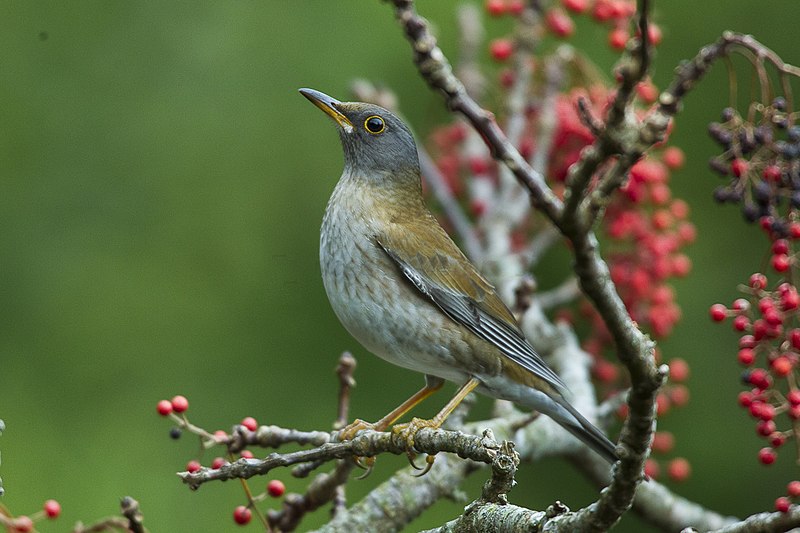
The pale thrush is a passerine bird found in the eastern Palearctic region. It is closely related to the eye-browed thrush and grey-backed thrush.
Measuring 23 cm long, it has pale pinkish-brown feet and a grey bill above, which is yellow below.
The male has a brown upper body with a blue-grey head and throat, while the underparts are pale brown.
This bird’s plumage helps it blend in with its environment, making it hard to spot. It feeds on insects, worms, and berries, often searching for food on the ground.
These birds have a melodious song and are known for their pleasant calls. The pale thrush is a migratory bird, and its breeding season lasts from May to July.
Despite being a common species, habitat destruction and hunting threaten its population, and conservation measures are necessary to ensure its survival.Scientific classification:
| Kingdom | Animalia |
| Phylum | Chordata |
| Class | Aves |
| Order | Passeriformes |
| Family | Turdidae |
| Genus | Turdus |
| Species | T. pallidus |
Also Featured In: Birds of Hyōgo,